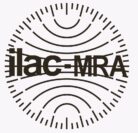We’re a finalist for the 2017 Telstra Business Awards!
We are hanging up our lab coats and dusting off those tuxes and gowns ready to attend 2017 Telstra Business Awards at Crown on Friday, 7th July 2017.
The team would love to see a short message of support from you on the big screen at the event. Send us your message today at telstrabusinessawards.com/mos“.
Follow us on the night as we post photos on our Instagram and Facebook
Wish us luck!

I like to think a lot of what we do at Microanalysis has an element of artistic flare. The images we capture on the SEM and Solarius are often quite beautiful. We recently invited the highly experienced and exceptionally talented Andrew Tyndall to come and photograph our scientists at work. His work has encapsulated the art behind the science. We look forward to sharing some of these images with you over the next few months.
Check out Andy’s website and Facebook page for more of his incredible work.
Microanalysis has always taken a very strong stance in relation to our payment terms. Respecting the importance of our cash flow, has been at the forefront of our business model and will continue to be. The trend for the larger multi-nationals asking for increased payment terms, some as large as 90+ days, has had a ripple effect across many small businesses. We have consistently remained vigilant on this issue, keeping our standard prices only applicable to approved clients who agree to our payments terms of 30 days from date of invoice. We have found many of our clients respect our payment terms and we benefit from a mutually beneficial working relationship.
For many small businesses however, this has become a huge issue. Small businesses constitute 97% 1 of businesses within WA and are vital to our economy. Establishing a framework that supports and encourages a healthy cash flow for these businesses is critical. As result the Australian Small Business and Family Enterprise Ombudsman (ASBFEO), in partnership with the Small Business Commissioners in New South Wales, Victoria, South Australia and Western Australia, and in association with the Council of Small Business Australia (COSBOA) and the Australian Institute of Credit Management (AICM), recently conducted an inquiry to examine payment times and practices in Australia.2
Their terms of reference were:
- The practice of corporations setting payment terms particularly for small businesses;
- Trends in payment terms and late payment with emphasis on commercial dealings between small business with large corporations;
- The effects and impacts that long payment times have on small businesses; and
- Potential regulatory and market-based responses available including recent developments such as unfair contracts legislation.
For the full Payment Times and Practices Inquiry Report, click here.
In short there have been 10 recommendations to the Australian Government following this inquiry, to assist small businesses. Of particular note is recommendation 8 & 9:
Recommendation 8: The Australian Government to introduce legislation for larger businesses to publicly disclose all of their payment times and practices and performance against those terms. Larger businesses being the top 100 listed on the ASX and multinationals.
Recommendation 9: Australian Government to introduce legislation which sets a maximum payment time for business to business transactions. Certain industries may need terms greater than the maximum which can be agreed providing they are not grossly unfair to one party. Where a longer term is called into dispute it will be considered an unfair contract term 3.
A recent analysis of average annual payments from over 300 clients this financial year has seen a healthy 28 days average for payment from date of invoice. We do have some outliers, companies that we will continue to work with to bring in line with our standard terms. Overall, we are extremely pleased with the positive financial relationships we have developed with our clients and suppliers. Spending less time chasing overdue invoices leaves us with the time to do what we do best, analyse your samples, and enables us to continue to provide affordable scientific analysis to all for many years to come.
Debbie Hughes
- https://www.smallbusiness.wa.gov.au/about/small-business-sector/facts-and-statistics
- http://www.asbfeo.gov.au/inquiries/completed-inquiries
- http://www.asbfeo.gov.au/sites/default/files/ASBFEO_Payment_Times_and_Practices%20Inquiry_Report.pdf
Thank you Paula McLay for writing this fabulous account of April’s RACI WA Event at Microanalysis. We thoroughly enjoyed hosting this event.
The evening of Tuesday April 18 was clear and cool: a perfect day for a RACI Members Monthly Meeting. This was a special event – a laboratory tour of Microanalysis. And as our President says, who doesn’t like to see how another lab does it? So, the RACI members (and non-members) gathered in the carpark in front of the building as the light slowly faded from the sky. The laboratory is situated in East Perth, and across the prettily landscaped road was a row of swanky apartments/town houses – not the scruffy industrial look many chemists are used to. Over the bowls of chips, the drinks and the sizzling sausages the 25 or so attendees mingled with the Microanalysis staff and chatted. What a diverse bunch: highly respected chemists enjoying retirement, chemists from a number of industries and laboratories, recent retirees, chemistry students in their undergraduate years – even a 3 year old mini chemist! After 30 minutes or so of eating/drinking/gossiping networking, Alistair Day, the host for the day (and Chair of the RACI WA Analytical Group), divided the mingling mob in two, sending the first half into the lab while the other gobbled sausages networked.
The laboratory retained strong traces of the property group that had previously inhabited the premises. A big kitchenette with heaps of comfy leather chairs. Big open plan office. Huge spherical white woven light fittings in the lab spaces (which staff wanted to decorate as Deathstars) and more carpet than you expect in laboratory work areas. A green and white wall of healthy green plants in fresh white pots separated the reception and office areas from the laboratory areas. The lab was clearly divided into wet sample handling areas, preparation areas with a huge bench to provide plenty of space, neat little side rooms containing the twin scanning electron microscopes and a big room with lots of other analytical equipment (various types of microscopes, X-ray diffraction equipment, laser surface scanners and other cool bits of kit we didn’t have time to play with).
The twenty or so staff at Microanalysis are involved in materials analysis – a nice catch-all phrase for all sorts of testing of materials. They measure asbestos and respirable crystalline silica for occupation exposure monitoring. They do particle characterisation, including size, shape, morphology and density. There is forensic analysis (including of gunshot residue). Mineralogy and petrography are undertaken and there was some interesting discussion of the examination of concrete to look at cracking and possible failure. Microanalysis undertake dangerous goods testing – these days if you ship it or fly it you need to know how corrosive/nasty “it” is and Microanalysis can find out. Think little metal plates soaking in “it” and lasers reading how deep each corroded pit is (or isn’t). Microanalysis is one of those classic labs where you can send some of that goop that came out of a pipe, ended up in a filter, or otherwise appeared unexpectedly – and they can hopefully tell you what it is. That takes some skill and is a very useful service.
After half the attendees had their look around the lab, the groups switched over so everyone could have their share of laboratory examination and drinking with a sausage-in-a-bun in the other hand. In due course, all were re-united in the carpark for further vigorous discussion. Eventually the sausages were eaten, the drinks packed away and talkative groups dispersed into the night.
The RACI wishes to thanks the staff of Microanalysis for their hospitality and the opportunity to familiarise chemists with the laboratory, techniques, equipment and services. Thanks also to Alistair and the Analytical Group for organising the visit.
Paula McLay
FRACI
Editor of RACI WA Newsletter
Asbestos – Definitely Not Dietary Fibre
If ingesting asbestos is potentially carcinogenic – and all of our old water pipes are made of asbestos cement resulting in high levels of asbestos in our drinking water – it is time to determine just what level of asbestos in drinking water is ‘safe’.
Everybody knows breathing asbestos is bad for you… linked to malignant mesothelioma and other lung cancers, asbestos has been completely banned for use or import in Australia since 2003, with significant discontinuation of use in building products starting in the early 80s.1 Widely used asbestos products included roof tiles, linoleum, fencing materials, window putty, rubber gaskets, paints, thermal insulation and more. Even after the widespread ban on all asbestos products was put in place, asbestos containing products are still present in existing buildings, asbestos cement water pipes, and imported products that should be asbestos free (eg. crayons, gaskets, paints etc).1,2
An interesting fact about mesothelioma that appears well known in the medical community but is glossed over in industrial and commercial settings is that mesothelioma can develop in the lungs (pleural mesothelioma) and in the gastrointestinal system (peritoneal mesothelioma) and both forms are primarily caused by asbestos exposure.3 Perhaps this connection has been largely overlooked due to the lesser risk of gastrointestinal cancers than lung cancers, with peritoneal mesothelioma accounting for less than 20% of asbestos related cancers and developing 20 to 50 years after exposure.4 Given the high incidence of asbestos related cancers, this 20% should be significant enough to take notice, even without the links to other gastrointestinal cancers.
The majority of the publicity surrounding asbestos focusses on the effect on the lungs, with recommendations about masks to prevent inhalation, stringent conditions for transport, and air monitoring to determine risk. To the casual observer it would appear that inhalation is the only hazard associated with asbestos, and current global and local guidelines reinforce this notion.
The Dept of Health, WA states5 that “While studies have clearly shown that asbestos poses a serious health risk when it is dry and inhaled, there is very little evidence to show that asbestos fibres will cause any harm when they are wet and swallowed. The effects of asbestos in the water supply have been studied extensively, and results have not shown an elevated risk of asbestos-related disease. In addition, although inhaled asbestos is a known carcinogen (cancer-causing substance), asbestos when swallowed is considered to pose very little, if any, carcinogenic risk to human health.” Additionally, the Dept of Health, WA mentions that the 2004 Australian Drinking Water Guidelines (2004 ADWG) and World Health Organisation have not set a guideline value for asbestos due to the absence of evidence that asbestos is hazardous to health.
The World Health Organisation (WHO) states6 in their 1996 documentation that “Although asbestos is a known human carcinogen by the inhalation route, available epidemiological studies do not support the hypothesis that an increased cancer risk is associated with the ingestion of asbestos in drinking-water.” They reinforce this in 2013, stating “There is therefore no consistent, convincing evidence that ingested asbestos is hazardous to health, and it is concluded that there is no need to establish a guideline for asbestos in drinking-water.”
The idea that ingestion of asbestos and asbestiform minerals could cause gastrointestinal cancer is not new – there are significant number of studies conducted through the late 1970s and early 1980s which investigate the possibility. Many of these studies conclude that due to small cohort sizes and the long delay between exposure and developing the disease, further study is required.7 Even with these limitations, some studies found a probable link between asbestos ingestion and gastrointestinal cancers, particularly stomach cancer, in both occupational8 and non-occupational10 settings. It was also raised that the comorbidity of smoking and asbestos inhalation obscured the significance of the link between asbestos ingestion and gastrointestinal cancers.
So, if ingesting asbestos is potentially carcinogenic, and all of our old water pipes and tanks are made of asbestos cement resulting in high levels of asbestos in our drinking water, is it time to determine just what level of asbestos in drinking water is ‘safe’?
Again, this isn’t a new concept. It was determined in 19719 that some beers contained low levels of asbestos. The asbestos was linked back to fibres released from the asbestos cement pipes used to transport the water, and it was shown that the fine fibres were able to pass through the filtration systems of both the water system and the brewery. Following on from this was the Duluth study10 between 1976 and 1981. After higher than expected levels of asbestos fibres were found in the drinking water of Duluth, Minnesota, USA, a study was started to monitor the incidence of cancers in the region compared with nearby regions over the same time period. The study noted an increase in cancer rates and a greater increase in cancer mortality between Duluth and the two comparative regions. In 1997, an epidemiological study of drinking water and cancer11 again suggested elevated levels of cancer in exposed populations and also noted that “As topics for epidemiologic evaluation, drinking water contaminants pose methodologic problems common to studies designed to detect relatively small elevations in risk, with the added challenge of assessing exposures for many years in the past.”
More recent studies have been more conclusive, although still there is significant need for further research. In 2005, a study of 726 lighthouse keepers in Norway was published12, showing the effect of asbestos in their drinking water on cancer of the gastrointestinal tract. The study was performed between 1960 and 2002 on lighthouse keepers first employed between 1917 and 1967. One of the first studies to more fully allow for the long delay in onset of asbestos related cancers, the study showed significantly elevated risk of stomach cancer among those exposed to asbestos in drinking water, and possible links to colon cancer.
In 2013 a literature review13 examined the published evidence so far linking asbestos to gastrointestinal cancer and summarised it in a useful table.13a Reviewing over 50 papers, the article shows the number of positive and negative links indicated in published works associated with types of gastrointestinal cancers and with the different types of asbestos. This article also notes dosages between < 1 million fibres per liter (MFL), cited as probably not harmful, to > 1 billion MFL, probably harmful, although doesn’t take into account water consumption.
This year, another review has been published14, calling for further studies and the possible establishment of monitoring plans. The expert commentary provided states “A risk threshold ([asbestos fibre] concentration in drinking water) for digestive cancers has not been convincingly identified so far and regulations, where adopted, have weak scientific basis and may not be adequate. With further and more definitive studies, evidence might become sufficient to justify monitoring plans, persuade countries with no current limits to set a maximum level of AFs in drinking water and might induce a revision of the existing legislations, pointing to efficient primary prevention policies.” The article links asbestos ingestion to gastric and colorectal cancer, toxic effects on the stomach, ileum and colon, histological alterations, and the ability to cross the placenta and enter foetal organs (including the liver) as well as act as a co-carcinogen agent.
Dosage effects have been inadequately studied, which makes developing guidelines very difficult. It is important that, instead of equating lack of evidence to lack of risk, we acknowledge the possibility of risk associated with ingesting asbestos and begin the journey of understanding and regulating asbestos in drinking water before many more people are subjected to the effects.
- Department of Health, 2013, When and where was asbestos used?. Available at: http://www.health.gov.au/internet/publications/publishing.nsf/Content/asbestos-toc~asbestos-when-and-where
- Border Force, Asbestos. Available at: http://www.border.gov.au/Busi/cargo-support-trade-and-goods/importing-goods/prohibited-and-restricted/asbestos
- Bofetta, P. (2006) Epidemiology of peritoneal mesothelioma: a review, Annals of Oncology 18: 985–990, Available at: http://citeseerx.ist.psu.edu/viewdoc/download?doi=10.1.1.521.9698&rep=rep1&type=pdf
- Conway, W. C. (2017), Peritoneal Mesothelioma, The Mesothelioma Center. Available at: https://www.asbestos.com/mesothelioma/peritoneal.php
- Department of Health (2016), Asbestos in drinking water. Available at: http://ww2.health.wa.gov.au/Articles/A_E/Asbestos-in-drinking-water
- WHO (1996), Asbestos in Drinking-water: Background document for development of
WHO Guidelines for Drinking-water Quality, World Health Organisation. Available at: http://www.who.int/water_sanitation_health/water-quality/guidelines/chemicals/asbestos.pdf?ua=1
- Morgan, R. W., Foliart, D. E., Wong, O. (1985), Asbestos and Gastrointestinal Cancer, West J Med. 143(1): 60–65. Available at: https://www.ncbi.nlm.nih.gov/pmc/articles/PMC1306225/
- Selikoff, I. J. (1974), Epidemiology of gastrointestinal cancer, Environ Health Perspect. 9: 299–305. Available at: https://www.ncbi.nlm.nih.gov/pmc/articles/PMC1475395/
- Cunningham, H. M., Pontefract, R. (1971), Asbestos Fibres in Beverages and Drinking Water, Nature 232, 332 – 333. Available at: http://www.nature.com/nature/journal/v232/n5309/abs/232332a0.html
- Sigurdson, E. E. et al (1981), Cancer morbidity investigations: Lessons from the Duluth study of possible effects of asbestos in drinking water, Environmental Research 25(1):50-61. Available at: (http://www.sciencedirect.com/science/article/pii/0013935181900797
- Kantor, K. P. (1997), Drinking water and cancer, Cancer Causes & Control 8(3):292–308. Available at: https://link.springer.com/article/10.1023/A:1018444902486
- Kjaerheim, K. et al (2005), Cancer of the gastrointestinal tract and exposure to asbestos in drinking water among lighthouse keepers (Norway), Cancer Causes & Control 16(5):593-8. Available at: https://www.ncbi.nlm.nih.gov/pubmed/15986115
- Kim, S. J. et al (2013), Asbestos-Induced Gastrointestinal Cancer: An Update, J Gastrointest Dig Syst. 3(3): 135. Available at: https://www.ncbi.nlm.nih.gov/pmc/articles/PMC4856305/
- https://www.ncbi.nlm.nih.gov/pmc/articles/PMC4856305/table/T1/
- Di Ciaula, A. (2017), Asbestos ingestion and gastrointestinal cancer: a possible underestimated hazard, Expert Review of Gastroenterology & Hepatology 11(5):419-425. Available here: http://www.tandfonline.com/doi/abs/10.1080/17474124.2017.1300528







